The following list contains 21 people, studios, research groups, and academic opportunities that have piqued my interest during my time at uni. Each one of them holds a warm place in my heart for their humanity, work-ethic, and willingness to perpetually exist on the cutting edge of their field. When I look at this collection of dreamers and doers I feel like a child again, tossing in bed waiting for Christmas to arrive. To work for any one of these places would be a gift. When I graduate, these are the people and places I want to work for to help make the world a more creative and genuine place. Thank you ❤️
Astro Teller —
Captain of Moonshots, X
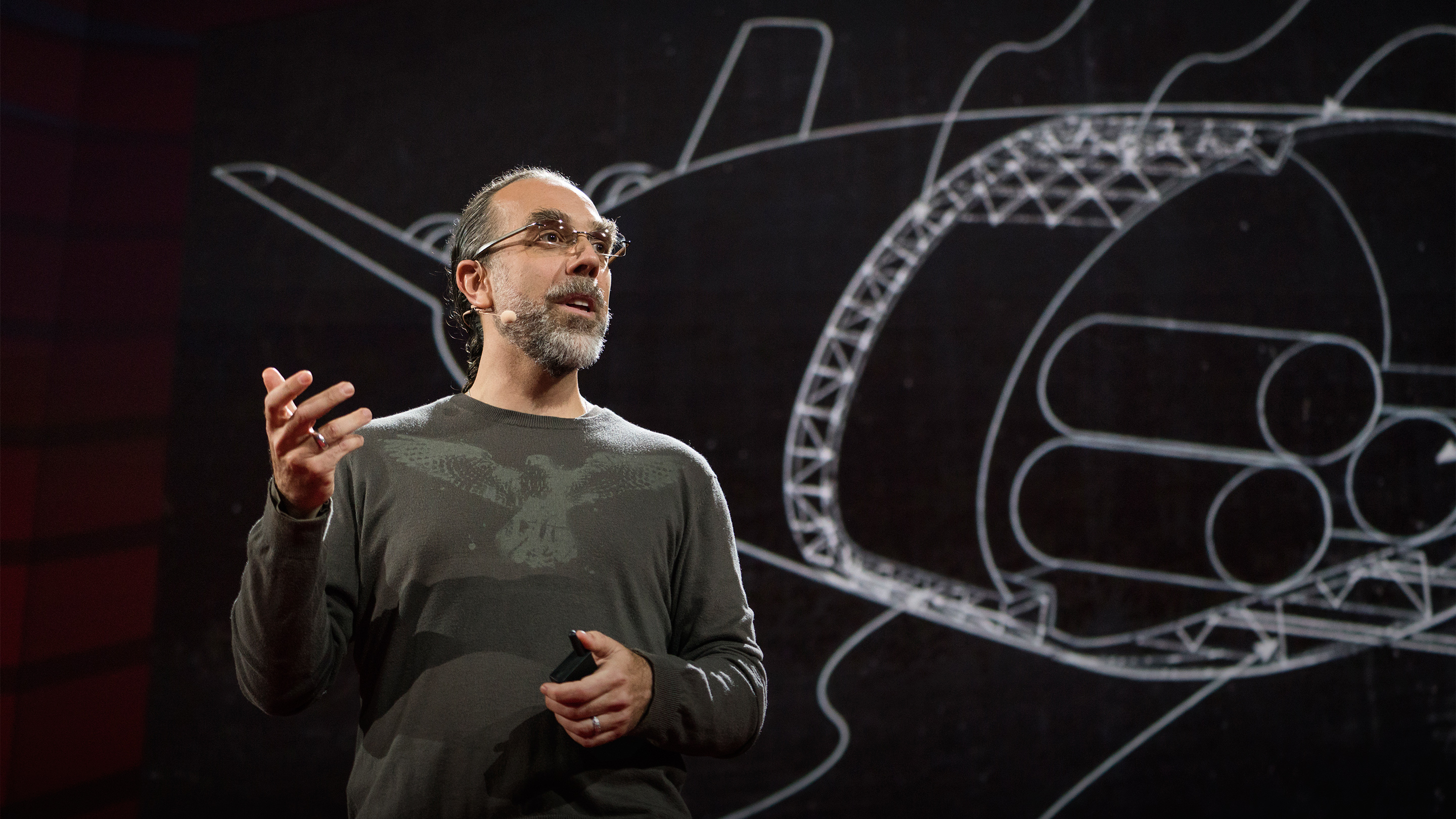
Initially, I was rather dubious of Astro Teller, the Captain of Moonshots at X (formerly Google X). Any man who can muster up that much passion for failure is either missing a few screws or knows something that most people don't. In Teller's case, it seems like it might be a little of both. However, he's not shy when it comes to sharing. His recipe for success is simple: take the smartest people you know, give them the space to solve wicked problems, and let failure be the easiest path to success. In fact, celebrate failure, make an award for audacious goals and hug people for their willingness to persevere in the face of failure. This type of culture is rare. Being told to fail more, that's easy. Creating a space that allows people to systematically fail and grow from it, that's special. It's for this reason that I think X is the place that I need to go.
Design, by itself, is not right for me. Each semester that goes by, I think more and more about computer science, electrical engineering, and mathematics. I have taken my share of CS courses but it's not enough. I need to get beyond the screen, out of the classroom and into the real world because I can't see a future where I am not bringing my ideas to life. Being at X would allow me to learn from brilliant minds who are all committed to changing the world. In one interview, Sebastian Thrun, founder of X, asks Astro what his best piece of advice is. Teller's response is straightforward and unwavering:
Live without fear... You won't get most of what you want.
If you are fearless and keep trying, then maybe, just maybe, you might be rewarded by the unexpected. In the upcoming months, I will be trying my hardest to get a spot at X to help shape the future for the better.
Bret Victor —
Founder, Dynamicland
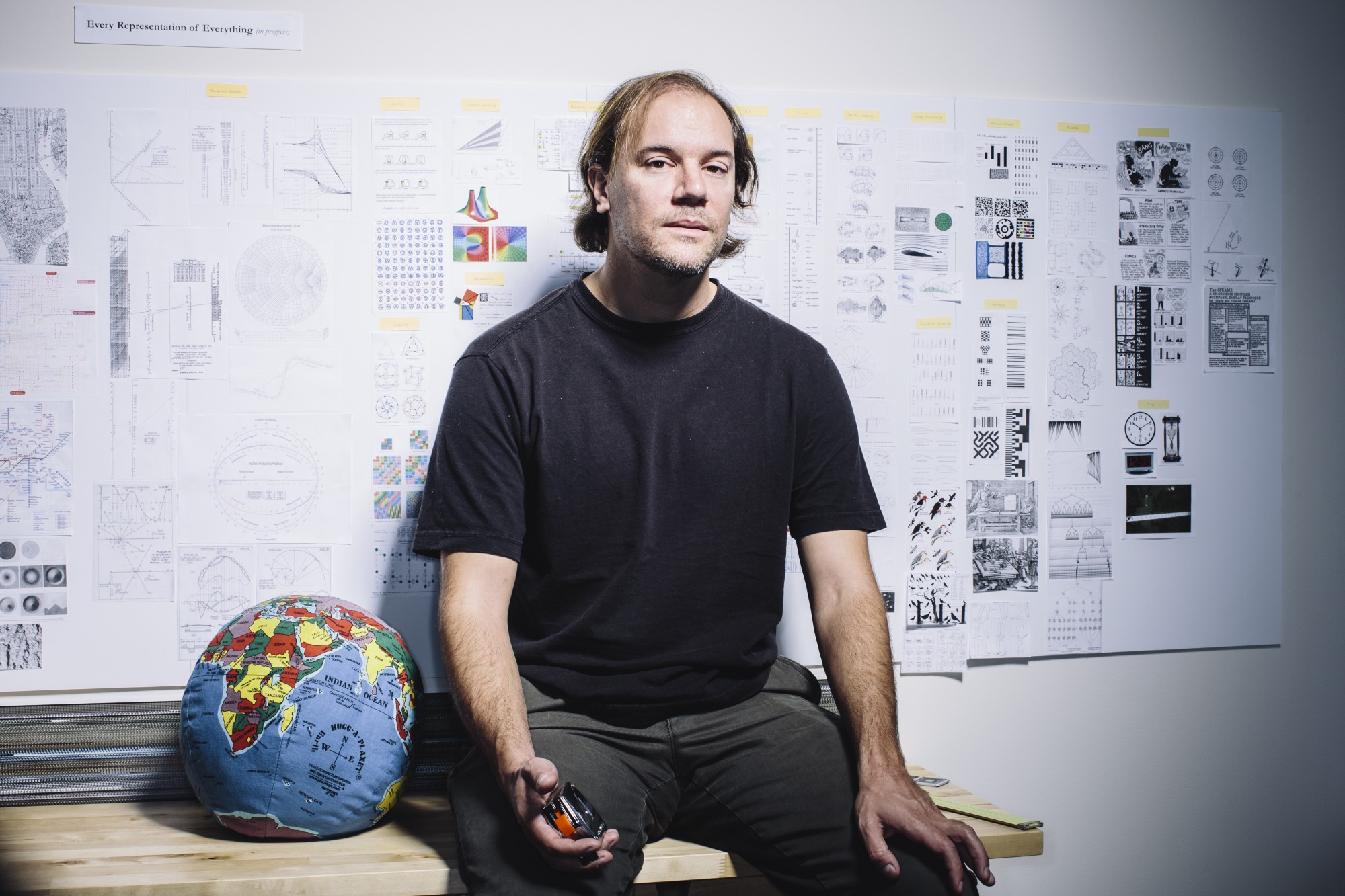
I came across Bret Victor while I was at Microsoft, interning for the Envisioning Team. Hidden deep in their Dropbox folders was a talk he had given back in 2012 titled, Inventing on Principle. It was the only video in the folder, which seemed strange, so I watched a bit of it. A bit turned into the whole shebang, and 54 minutes later I was about as giddy as a nutcracker in a Nutella factory. My excitement began with his opening statement:
Creators need an immediate connection to what they create... So much of creation is discovery, and you can't discover anything if you can't see what you are doing.
As Bret explains in his video, our intensely human need for play has been compromised by an upholding of outdated paradigms of interaction. As a result, ideas are being stifled. Towards the end of the video, he asks the audience to consider the principles by which they choose to live their life. At the time of watching the video I didn't really have any idea what I wanted to fight for, however, a year later, I think I am starting to figure it out. Some of my ideas can be found in my post titled, "Data as a Material."
Currently, Bret Victor is working on Dynamicland, a long-term research group focusing on creating new ways of interacting with computers. Seeing what has been done already is quite inspiring, and after I graduate I could see myself helping with the research to bring about new modes of computation.
Matt Jones —
Principal Designer, Google AI
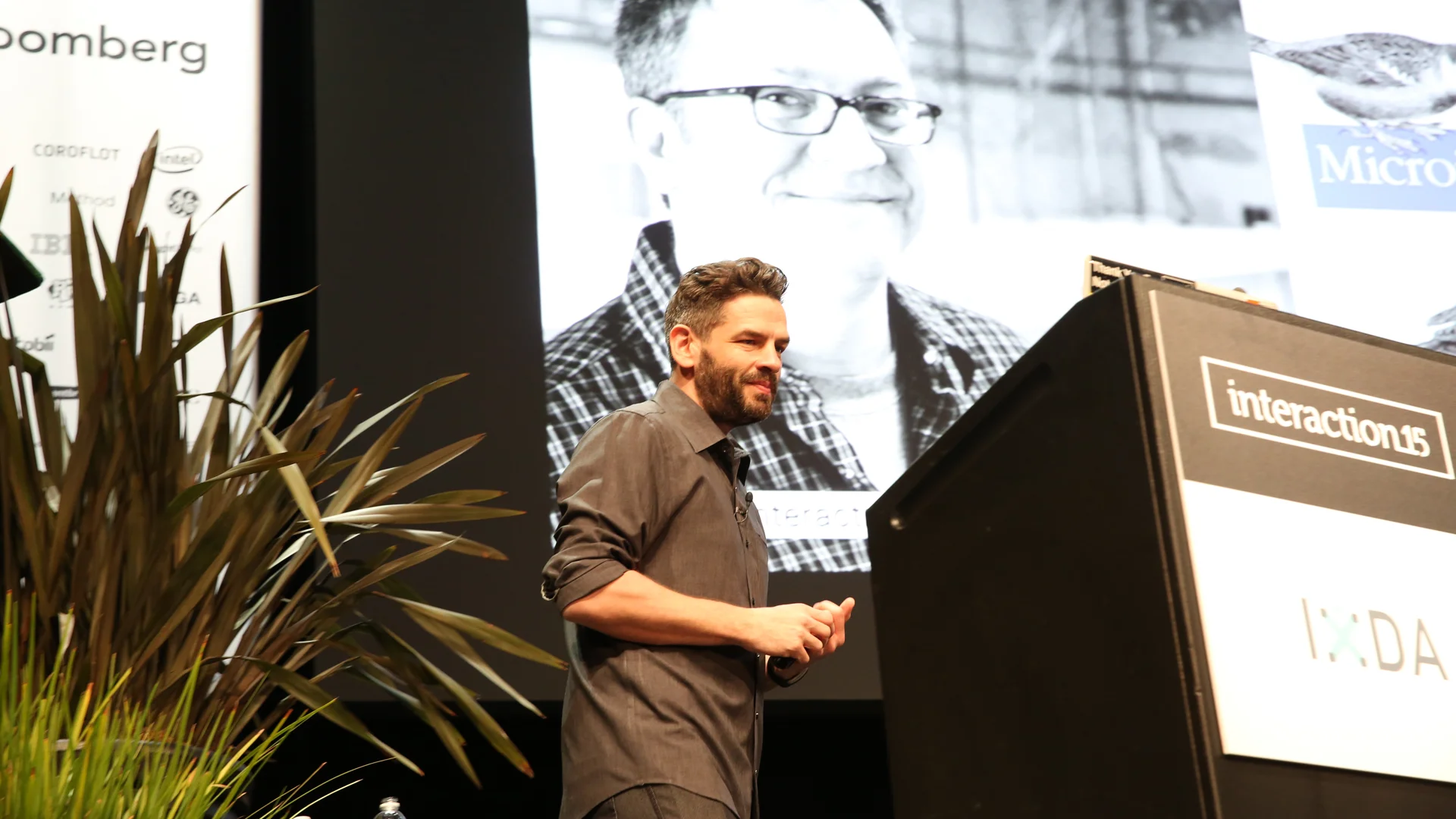
I started looking into graduate schools back in 2017. One of the first schools I looked at was the Royal College of Art. While skimming through their staff page, I discovered Matt Jones, former principal at BERG, currently at Google AI, and curator of the blog Magical Nihilism. Upon reading some of his blog posts, I was drawn into the curious thoughts, quotes, and speculations he had to offer. However, there was one post that caught my attention more than any other post. It was titled "Centaurs not Butlers," and it contained his professorial application for the MIT Media Lab. Towards the middle of the application he states:
Designers working with machine intelligences both as part of their toolkit (team?) and material will have to learn to be shepherds and gardeners as much as they are now delineators / specifiers / sculptors / builders.
This felt magical. I think popular culture portrays AI as a tidal force that will usurper humanity, but this idea of centaurs was fresh. It felt logical and right. It felt like an ethos worth upholding.
After some more snooping around I found one of his most recent talks given at IxDA '15, "Jumping to the End — Practical Design Fiction," which does a brilliant job of exploring the utility of Design Fiction. From here I continued exploring more of his talks including "Immaterials," "Mitochondria," and "Social Software, Not Social Networks." These talks, in conjunction with his blog and the work he is heading at Google AI, has made me keen on working for Matt Jones. I thoroughly believe in his approach to both Design and Machine Intelligence, and I would love to support a future of "centaur" designers while at Google AI.
↳Blog
Jonathan Kim —
Designer & Creative Director, Rare Volume

In 2016, Jonathan Kim reached out to one of my closest friends, Devon Cherry, through a Pinterest DM. At the time it was quite odd, and we both thought it was a joke. However, it turned out he was serious. He wanted to hire her to work for the company he was starting, Rare Volume. After graduating, Devon went off to work for him and over the past few years, I have only heard fantastic things about Jonathan. The company, Rare Volume is led by Jonathan Kim, Robert Hodgin (a fantastically hilarious speaker, check out his talks at Eyeo), and Alvin Groen. The New York based company focuses on interactive installations that combine motion and creative code for museums and exhibits.
The main reason I want to work for Jonathan Kim is because of a few things he said in his interview with Ash Thorp on the Collective Podcast. In the interview, he talks about his company, his wife, his motivations for working at Firstborn, and most interestingly his story of becoming a designer. The thing that really stood out to me was how he treated his career coming out of college. Due to financial reasons, he was unable to complete his degree and in turn, he treated his job like school. This mentality is something I firmly believe in, and it is the way I want to approach my career as I take my first steps into the design world.
Pattie Maes —
Director, Fluid Interfaces
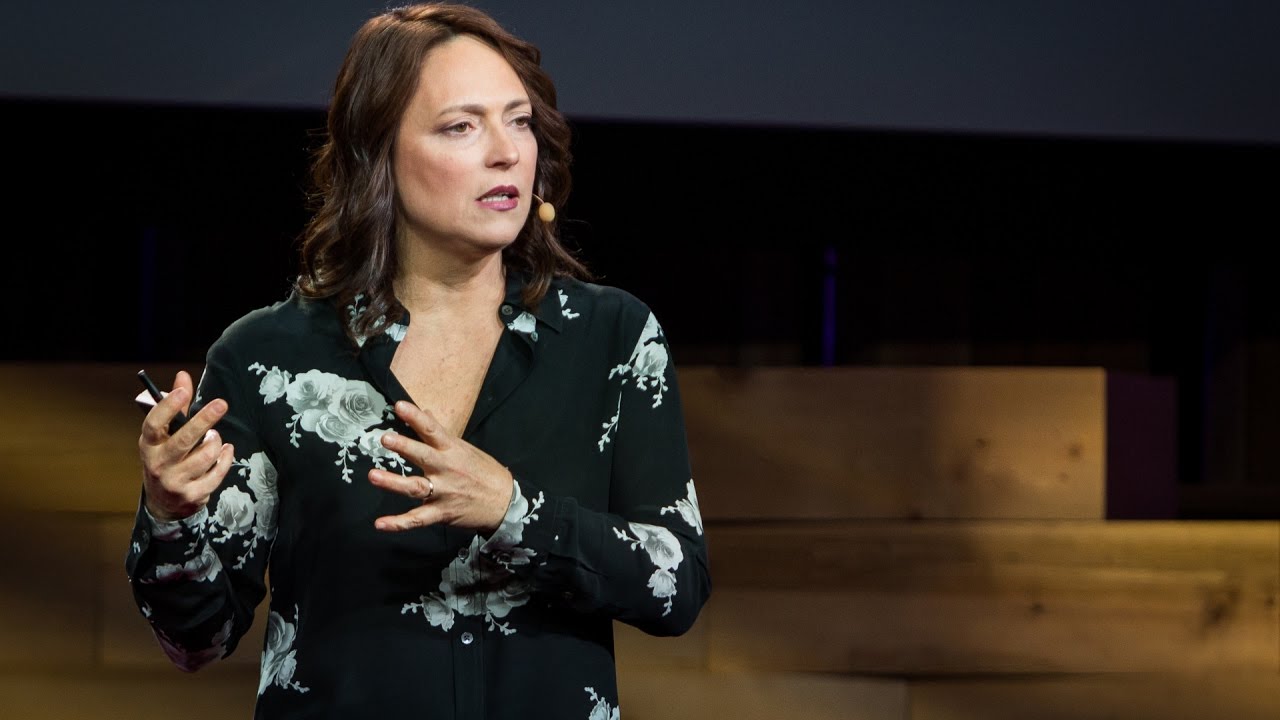
Pattie Maes originally started out at MIT in the Computer Science and AI department (CSAIL) but in 1991 she joined the Media Lab. She founded the Fluid Interfaces group and has been the director ever since. Of all the groups at the Media Lab, it is the one I think I would be best suited for. Their projects aim to cognitively enhance aspects of humans enabling them to "become (or remain) the person they want to be." I think the critical aspect of this statement is the word "remain." This recognition that technology is changing us is a critical factor upon which future interfaces should be considered. Maybe we should be doing our best to let humans remain human while creating interfaces that fit better into our personal lives.
The two projects that interest me most from this team are Alter Ego and Reality Editor. These two novel approaches to human-computer interaction are ingenious ways of solving the current problems of augmenting domestic products, and minimizing screen-centric computing respectively. A large portion of my time in school has been spent thinking about these two problems. With the spread of machine learning, I think there is more to be explored with these concepts. I am applying to the Fluid Interfaces group to be a masters student for Fall of 2019 to explore future interfaces augmented by mixed reality and machine learning.
Nando Costa —
Principal Creative Director, Extended Reality

I first met Nando Costa during my time at Microsoft. My mentor and culinary wizard, Jenny Kam, connected the two of us after I told her about my penchant for 3D and Augmented Reality (AR). Nando, at the time, was a Creative Director working on the Windows Mixed Reality team. Prior to Microsoft, he had worked for Instrument down in Portland. I think the biggest thing that drew me to Nando was his need to make work. He felt that too much time is spent talking rather than making, which I wholeheartedly agree with. I think if people made things rather than talked about making things, trivial arguments would have no room to exist.
Another thing that impressed me about Nando was the team he had assembled. It consisted of many top artists like Albert Omoss and Shamus Johnson. Recently, Nando has switched over to the Office side of Microsoft exploring avenues for Mixed Reality (MR) within the home and office. After talking with Nando, I considered dropping out of college to work for him as soon as possible. Seeing as I am still in school, I hope to be working with Nando at some point after I graduate.
Khan Academy, Long-term Research —
Education company
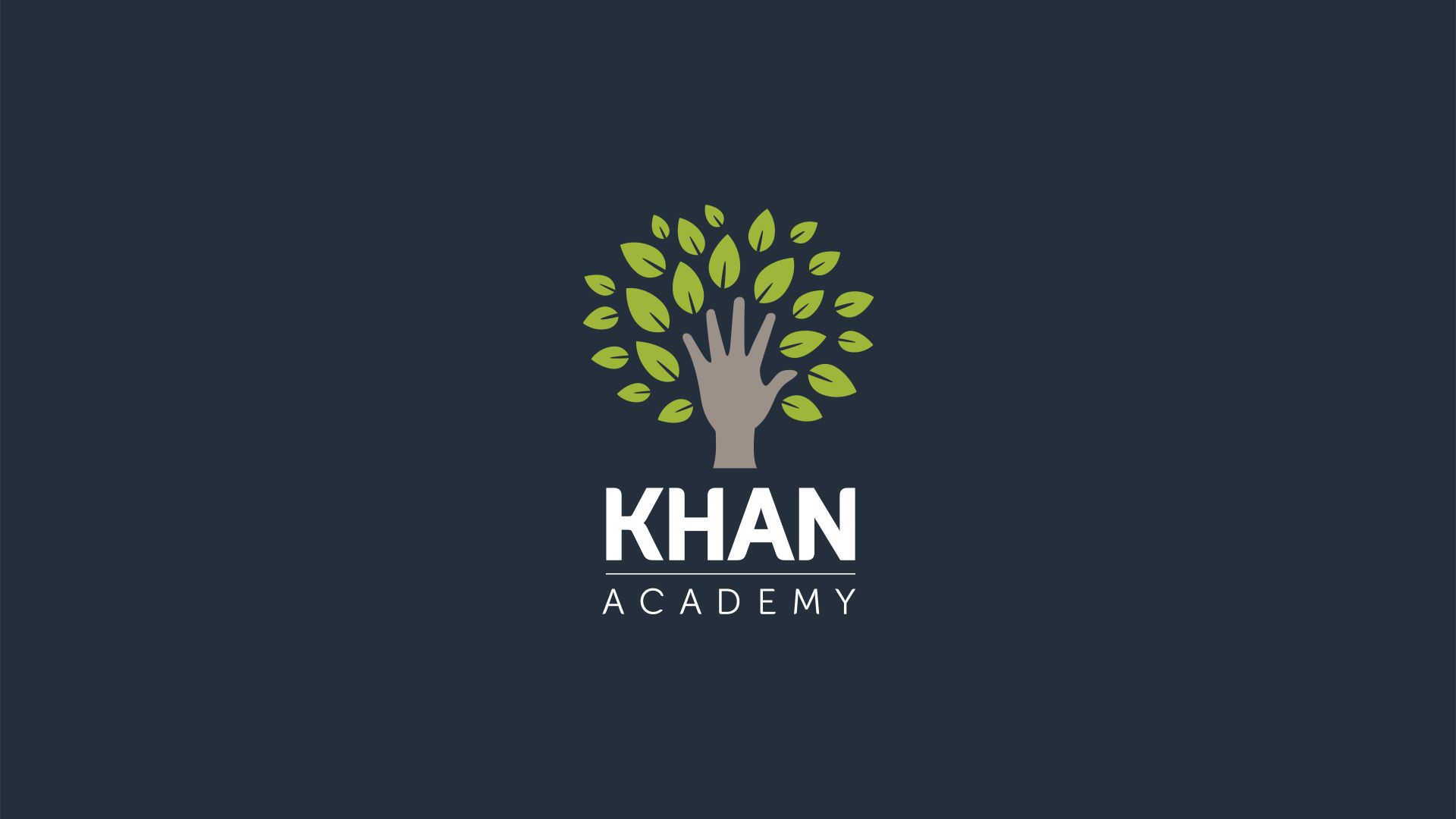
I hadn't thought about working at Khan Academy until I listened to Sal Khan speak about Rethinking Education. In this hour-and-a-half long talk to the students of MIT, he details the history and trajectory of Khan Academy. To this day I use the free, non-for-profit platform for personal growth but I had never thought of being a designer there. That changed when I heard the amicable, 40-something-year-old talk about his vision for education.
Personally, I think the education system in America is wack. It is anachronistic and on-par with our prison system when it comes to creating change. As Sal mentions, the basis of our system rests upon the fact that everybody is required to meet checkpoints. These scattered and impersonal checkpoints are there to evaluate understanding, but they do so ineffectively. Even worse, if you don't meet the checkpoint, your education keeps moving forward. In turn, countless students are left thinking they're not a "math person" or a "history person" or whatever it may be. Khan Academy was one of the first organizations to make the world re-think how learning could be done.
This ended up leading me to my discovery of the Long-term Research group located in Khan Academy. The group is headed by May-li Khoe and Andy Matuschak along with Scott Farrar they are working to re-imagine education. In addition to the Long-term Research group, there is also a blossoming design community within Khan Academy that I would enjoy being a part of as well.
Orion Tait —
Creative Director, Buck
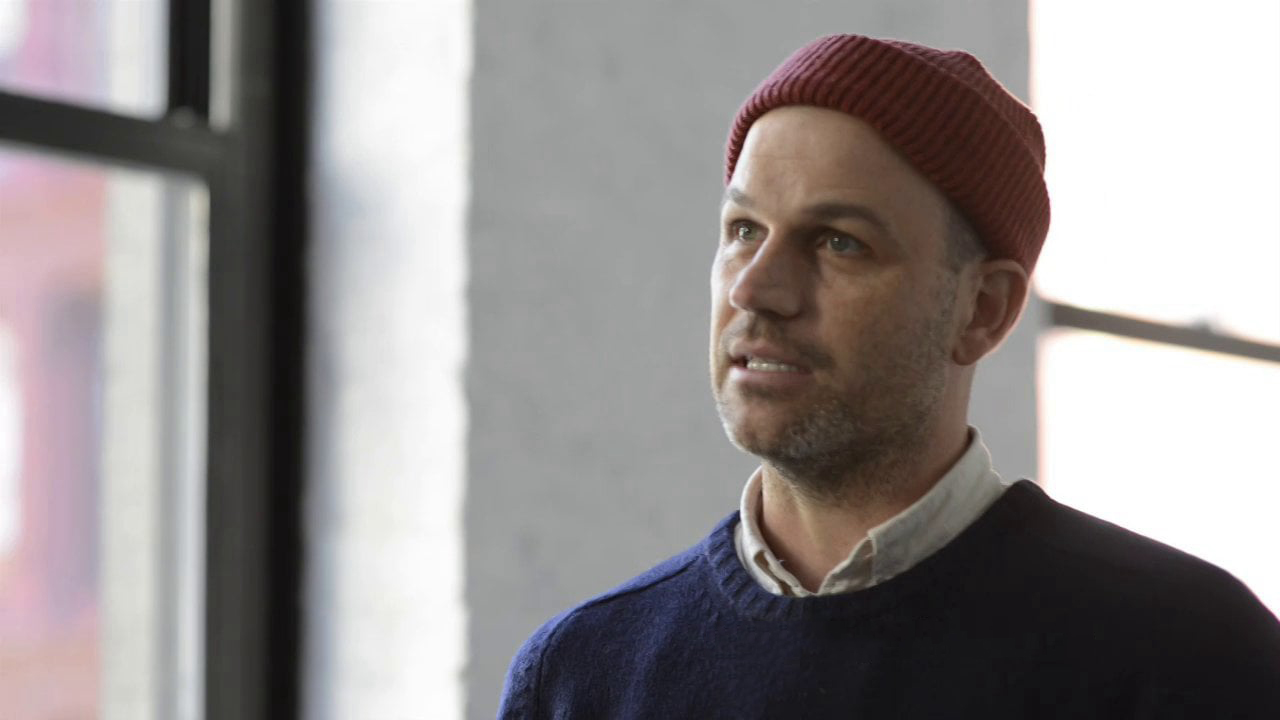
I can honestly say I had no clue who Orion Tait was when I first saw him. He came to speak at Thought at Work 2015, an annual design conference hosted at the Rochester Institute of Technology. If I had known how much I would come to admire the work he had a hand in making, I would have done a lot more than just clap at the end of his talk (I might have given a whoop or maybe a booya). In his talk, he explained what Buck was as well as what he does for Buck. He showed the opening titles for F5 as well as the frame by frame piece done for Good Books. Even without knowing who Orion Tait was, I was blown away by the quality of work that was coming from this place called Buck.
Through listening to the Motion Sickness podcast I have come to discover other artists at Buck including Lucas Brooking, Joshua Harvey, Claudio Salas, and Thomas Schmid, all of whom have only made me want to work for the studio even more. At some point in my career, I hope to use some of my 3D skills to help with animation and technical problem-solving.
ManvsMachine —
Motion studio
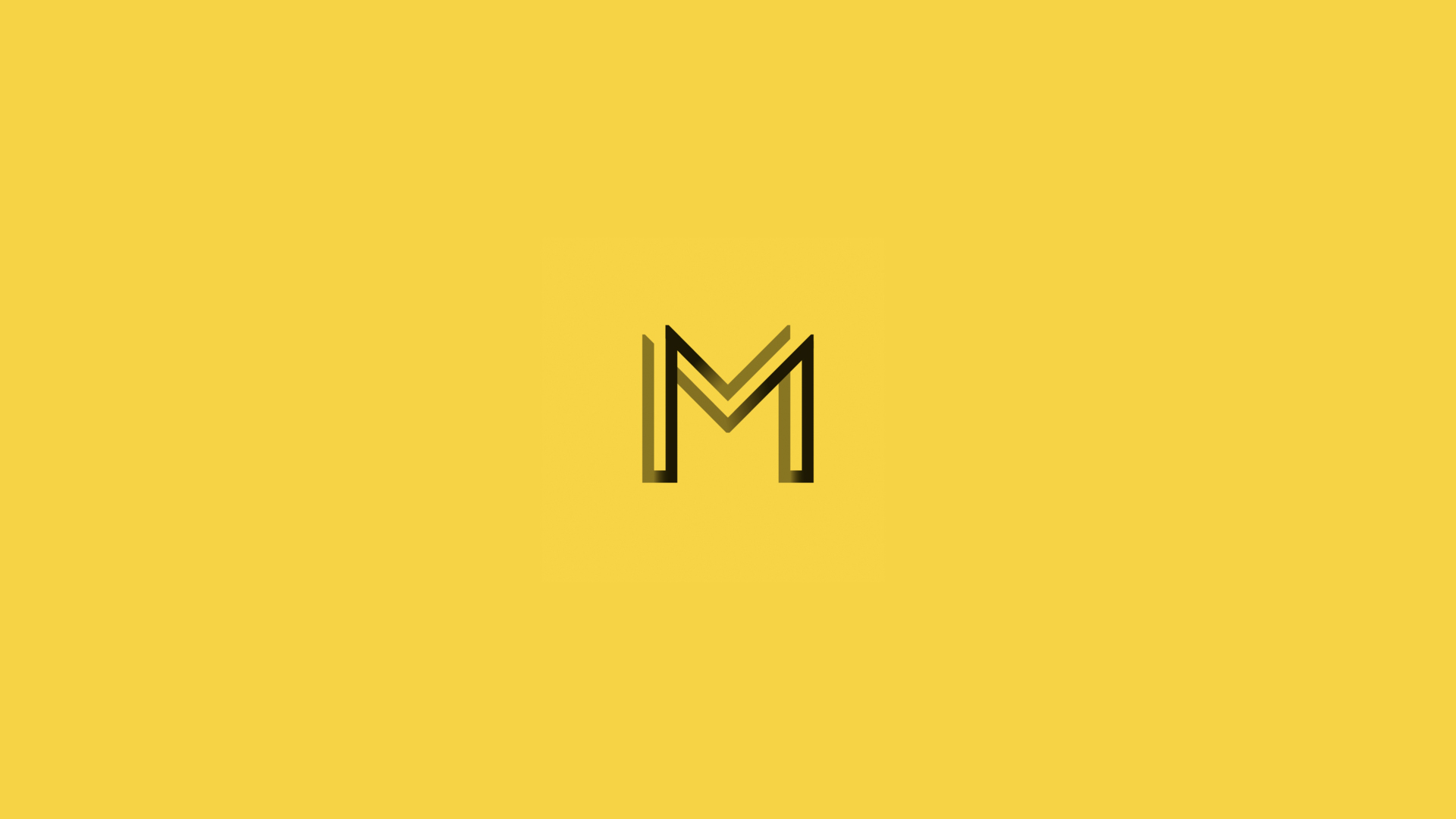
In my mind, ManvsMachine is to 3D as Buck is to 2D. This studio of world-class designers has produced some of the greatest 3D work to date. I heard about ManvsMachine indirectly through watching Simon Holmdedal tutorials back in his early day. His work with Thinking Particles and Xpresso really got me acclimated to Cinema 4D while also inspiring me to begin learning Houdini due to Cinema 4D's limitations. Other artists who have worked at ManvsMachine include Jordi Pages, Alexa Sirbu, and Lukas Vojir.
The level at which the studio produces its work has always pushed me to keep learning and exploring 3D and it would be a dream to keep improving my artistic skills while working at a studio like ManvsMachine. Currently, they have locations in London and LA. Recently, it seems the studio has been experimenting more and more with incorporating 2D animation as well as typography into the mix setting them up for a new wave of breathtaking work.
Mitch Paone —
Creative Director, DIA

Mitch Paone and his wife Meg Donohoe are the founders of DIA studio, a design agency that dominates kinetic type like nobodies business. I'm not sure at what point I came to hear about DIA, but their work has always been an inspiration for me. They're more than their work though, it's their philosophy about design that really excites me. In one of Mitch's presentations at the Type Directors Club, he takes a deep dive into his musically driven beliefs. The talk is called Time is Form / Form is Time, and it starts off with Mitch whipping out a pocket keyboard and playing a little blues solo. From there he goes on to list all the people that have directly or indirectly inspired him as a creative. These two moments solidified my opinion of DIA instantly. Any Creative Director willing to play a tiny piano and share his inspirations is a man I want to work for.
With these two gems on the table, he continued to drop magical bombs of insight. One of the most memorable parts of the talk is his section devoted to instruments for creativity.
As we evolve, creatively, over time, we have this need to express something more and the tools that we have limit us to a certain degree.
As a result, we need to make our own tools that pick up where our current tools left off. The studio uses OpenFrameworks and Processing to create little instruments of creativity that allow the designers to rapidly iterate through countless procedurally generated designs and design based on intuition and feeling. It's not always right or perfect but it's a way of working that has gotten lost in the computer age. Seeing the studio work so courageously through their designs is motivating and I am continually in awe of the work that DIA produces.
James Paterson —
Weirdness Engineer, Presstube
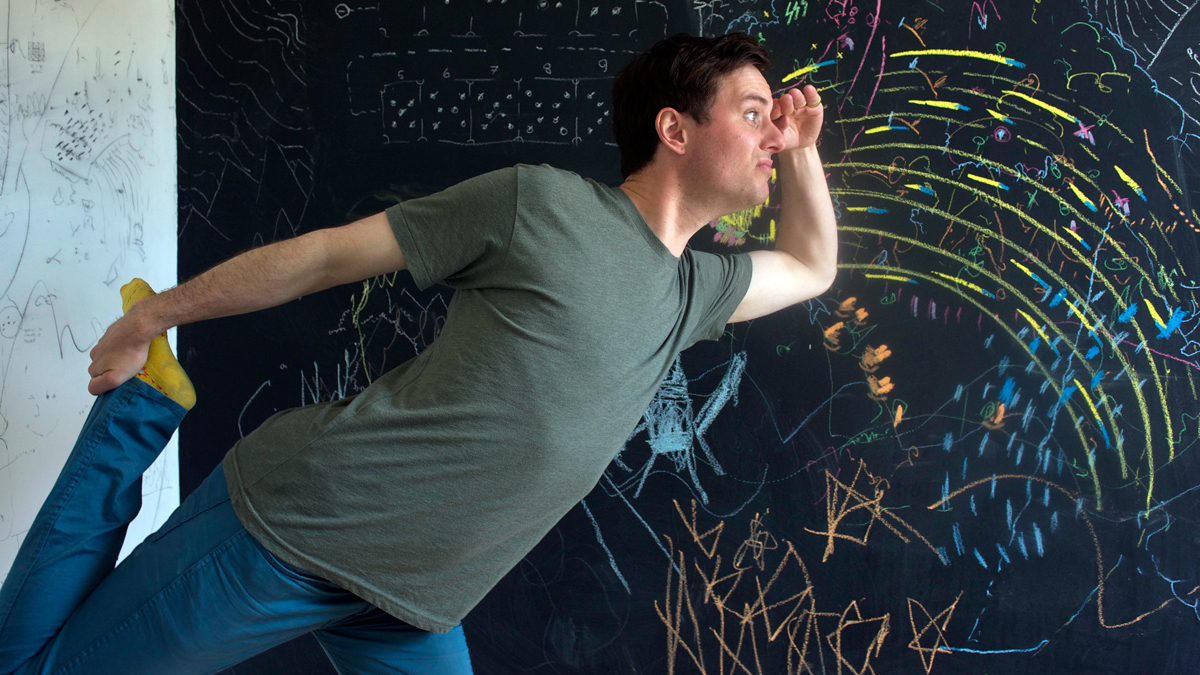
James Paterson, aka Presstube is a designer hithering from Montreal. One of my professors recommended I check out his work, sadly I don't think I have the words in my vocabulary to capture the melange of excitement, pleasant discomfort, and synaptic stimulation that occurred when I first saw his work. However, no drawing could have prepared me for the Nun Tit Oracle which left me speechless. The Nun Tit Oracle is one of James' earlier games that he made while teaching himself to code (back when Flash and ActionScript were a thing). Though the game is rudimentary I think it's a perfect example of why I find him to be inspiring. James has this innate ability to manifest his imagination in everything he touches. You know that you are looking at his work regardless of its nature, whether its 2D or 3D, code or design, stationary or animated.
In addition to his work, I also find his approach to life to be fascinating as well. In his talk, The Gently Rounded Triangle, he shares a lot about his practice touching upon things like handling anxiety or making the perfect airplane. Whatever it is, he does it with a tremendous intentionality that only seems present in the most creative of individuals. It's not alone that he came to discover his mode for working. With his close friend Amit Pitaru, he found a rhythm to his work.
I hunt around for points of resonance where disciplines collide... When I find one that I like, then I drill down.
It's simple and no different from most designers, however, the word resonance has stuck with me to this day. Seeing the resonance that comes from Amit and James makes me excited for the time when I find someone I can connect with creatively. I have a place up in Montreal and I plan on reaching out to James at some point. I think it would be a humbling experience to work and learn from him and come up with random psycho vomit together.
Andrew Herzog —
Partner, HAWRAF
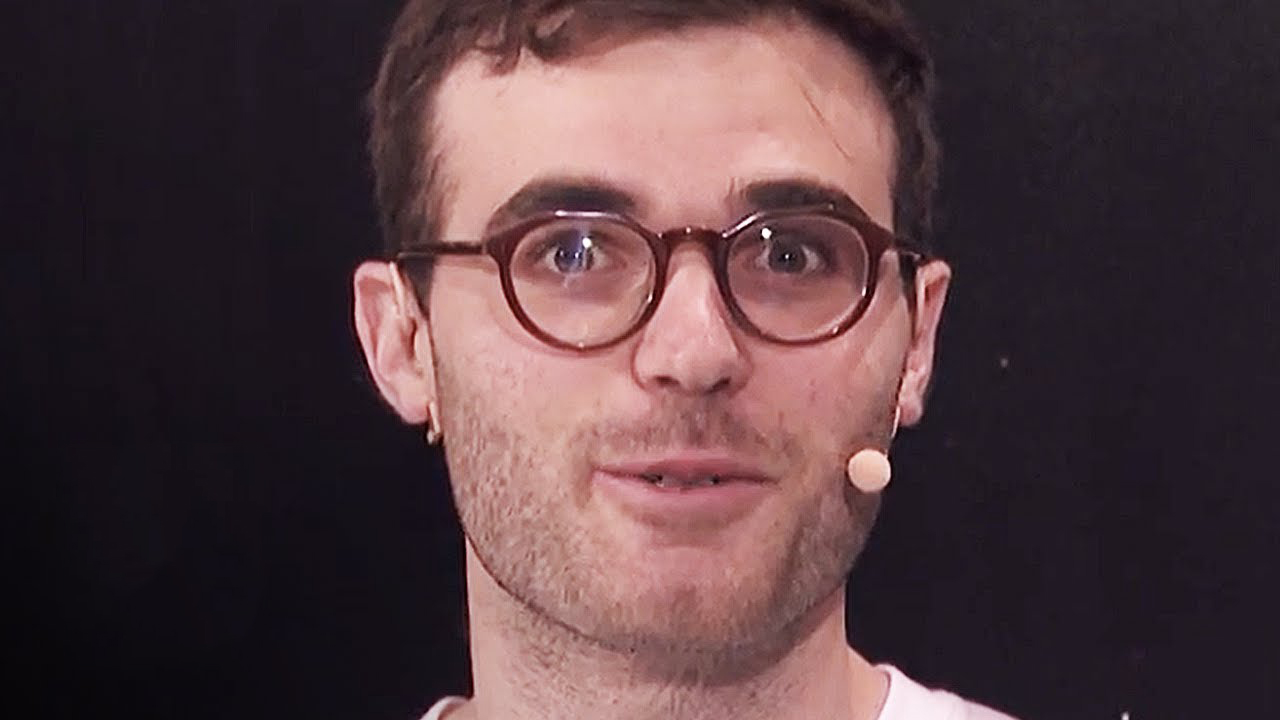
I met Andrew Herzog in 2017 when he came to RIT to speak at Thought at Work. He was the keynote for the conference and he had the presentation to prove it. In a few hundred slides he went through his design career going from his very first website to his work at the Goole Creative Lab to his current exploration of drone photography. By the end, I had a hundred ideas I wanted to talk to him about, but more importantly, I had one project I wanted to pitch to him. I did a little back-of-the-napkin calculation and figured I had about 1 hour to whip together a little website before the closing dinner at 7:00 PM.
I sprinted to my dorm room and began slapping some juicy JavaScript together. My idea was to use Andrew's drone footage as the canvas by which a computer could draw. We spend so much time telling a computer to do stuff with code, why not let the computer tell us what to do instead. Within an hour, I had a decent random walk web app that I was ready to show to Andrew. Again, I sprinted back to the other side of campus and made it just in time for the closing dinner. I managed to get some time with Andrew and talk to him about the idea. He had a big grin on his face by the time I had shown him the little prototype and he just said: "Let's do it." I'm not sure what I was expecting but it definitely was not spending a weekend with Andrew flying his drone. The next day we got out in the fields and started playing around. By the end, we got a few good shots that Andrew ended up posting on his Instagram.
Currently, Andrew is a partner at HAWRAF down in New York City. I am not entirely sure what kind of studio it is but I would love to spend some more time working with Andrew coming up with more random projects and experimenting with his drone.
Tarik Abdel-Gawad —
Designer, Google
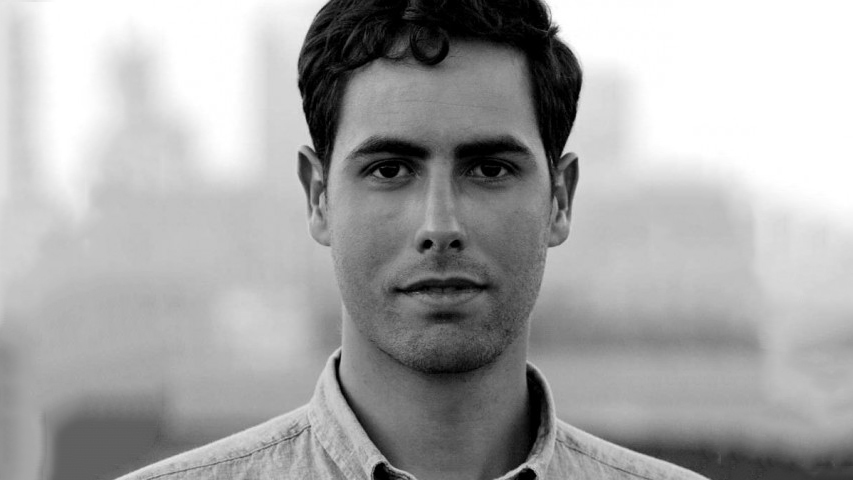
I really don't know much about Tarik Abdel-Gawad. All I know is that he was the creative and technical director for Box, one of my favorite videos to this day. His bio says that he works on AR and VR at Google, but other than that he's a black box.
Copenhagen Institute of Interaction Design —
Interaction Design Program

The Copenhagen Institute of Interaction Design (CIID) is the successor to Interaction Design Institute Ivrea (IDII). It was set up by the professors of Irvea after IDII closed down in 2005. Since 2006, CIID has been in full swing teaching its masters course in interaction design. I had the extreme pleasure of participating in a one-week summer school at CIID during the summer of 2018, taking a class in machine learning with Andreas Refsgaard and Gene Kogan. Beyond just the sheer beauty of the country, the culture of CIID was intoxicating. It is a haven for makers, led by experts, held together by a tight-knit sense of community.
During my summer school experience, I had the chance to talk to numerous alums and a few current students. All of them recommended the school but warned of its break neck pace. This warning only excited me more, and after I save up some money, I would enjoy spending a year with CIID leveling up my IxD skills.
Matt Jakob —
Creative Director, Tendril Studio

I was wearing my McDonalds visor—mayo deprived turkey sandwich in one hand, pink flamingo pen in the other—when I saw Matt Jakobs for the first time. He was presenting in the B-Side lounge at FITC Toronto 2018. The title of his presentation was The Illusion of Life and it was the best talk of the conference. Matt Jakobs had recently joined Tendril as Creative Director and with his talk, he was sharing the beginnings of a long-term project for the Toronto based studio. The Illusion of Life is the book that shares Disneys 12 principles for capturing life through 2D animation, Matt Jakobs goals is to illude life but through principles of 3D. So far he's only done a handful but his list includes things like noise, agents, recursion, and propagation. Coming into the presentation with a Computer Science background made it almost magical to see the principles unfold in 3D space, rendered at an immaculate level. Needless to say, I was in love. I am curious to see where Matt leads Tendril with his countless years of experience and mathematical tendencies. If I ever make it to Toronto again, I would thoroughly enjoy working and learning from Matt Jakobs and the team at Tendril Studio.
Matthew Lamb —
Executive Producer, Hololens
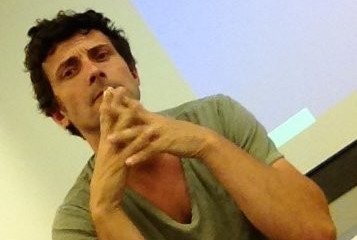
Just like Nando, I came to be introduced to Matthew Lamb through my extraordinary friend, Jenny Kam. I had first seen Matthew at an internal design conference held on the Microsoft campus. He had given a talk called Cognitive Design, and of all the talks that day it was the one that rocked my socks the most. I'm not sure if I can say what it was about, but it was the funniest, most caffeine induced, erudite (in all the best ways) design talk that I had seen up until that point. The second he finished I knew I wanted to speak to the man that had just referenced Brâncuși, Fight Club, and dimensional interfaces all in one 25 minutes span.
Matthew and I met for coffee towards the end of my internship. He walked in with sunglasses and a graphic-t. What followed was an hour-long talk that had my mind racing. Talking to him felt like sticking a nail into an outlet. For starters, he began working in the field of Neuroaesthetics, after which he transitioned to VFX, and finally settled upon interaction design. He was on the team that worked to bring the Hololens to life and has been working for Hololens ever since. We bonded over TouchDesigner and shaders and he talked about his phone background which was an illustration done by Mobieus. Towards the end of the conversation, we talked about his son for a bit and finally ended on rock climbing and skiing. I don't know how I would help Matthew Lamb, but if I had the opportunity to learn from him I would take it in a heartbeat.
School for Poetic Computation —
Alternative school
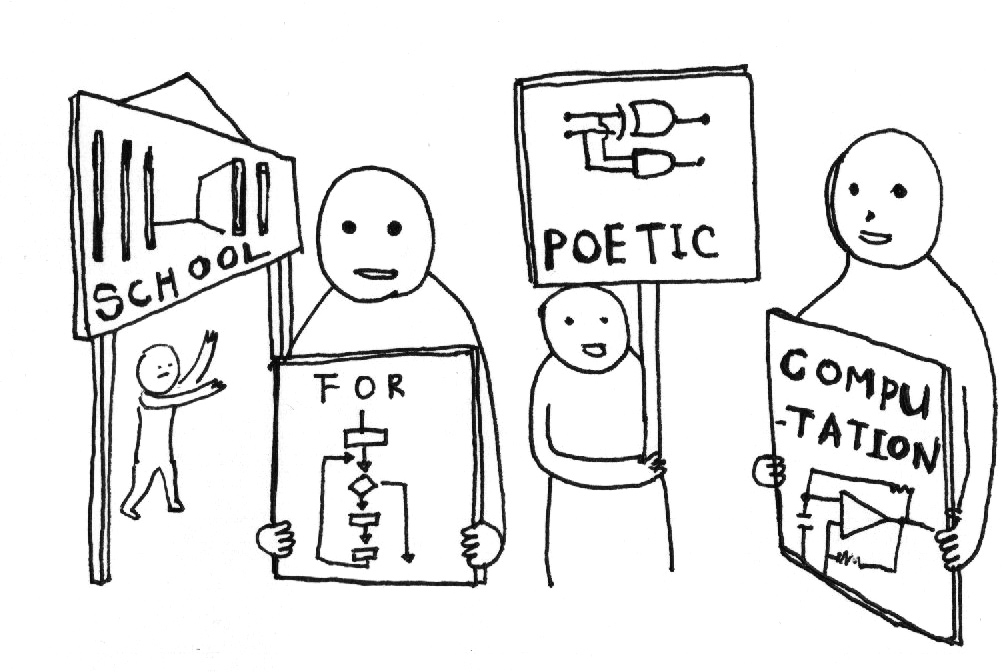
The School for Poetic Computation (SFPC) is a small school located within the heart of New York City. Its mission is to teach people to inquire about the world in a computationally poetic way. Through computers and code students are asked to approach programming as one might approach creative writing. In doing so they have created a space for all walks of life to come together to create at their own pace. When I first saw Zach Lieberman post about the school on his Instagram. I was a bit taken back by the fact that such a place existed, poetry and computation. It felt like someone had just told me toothpaste and orange juice were a good combo. For so long, code had existed in my mind as a mathematically driven endeavor. Never had I thought to approach it poetically. But as the concept settled in my mind, I realized SFPC was a place I needed to go to. As I researched the school, I found out that Amit Pitaru had also helped to found the school. Amit has been a long time inspiration for me. His work with the Sonic Wire Sculptor and Rhonda are both inciteful pieces of interaction design that reveal a lot about how Amit approaches the world of design and code.
In addition to Zach and Amit, the school was also founded by Taeyoon Choi and Jen Lowe. Currently, SFPC runs on a semester calendar with programs occurring in fall and winter. It also offers a summer session which I plan on participating in this year (2018). From there, I would like to experience a full semester at the school, exploring my artistic voice as both a designer and developer.
Hiroshi Ishii —
Director, Tangible Media
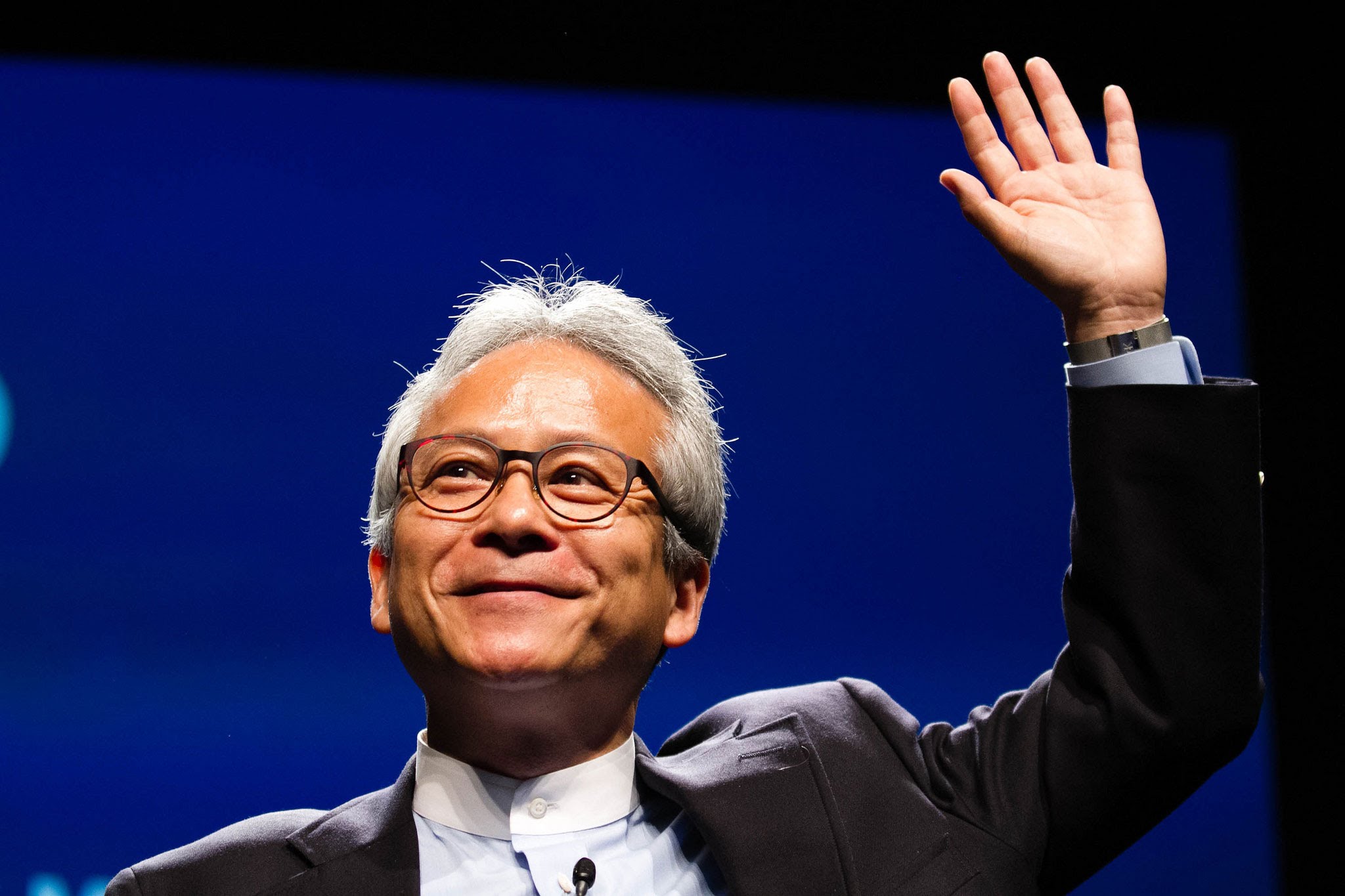
Hiroshi Ishii is the founder and current director of the Tangible Media Group at the MIT Media Lab. I first discovered the group back when I was a sophomore in high school. The thing that interests me most about Hiroshi Ishii and his lab is the amount of emphasis they place on vision. Like Doug Engelbart and his Mother of All Demos, they are looking to solve problems at a 200-year scale. The group is not mired by stylistic trends or modern design practices, they are looking to make paradigmatic shifts in computing. Though they are far from their dream of radical atoms, I am curious to see how the team will change the future.
I visited the lab in 2017 and was amazed by professor Ishii's zeal. Sitting in front of him, you can feel the power that his vision holds over the circuit strewn lab. I don't have the technical skills to execute on the ideas being dreamed up in the Tangible Media Group, but their work will forever be a beacon as I move forward in my career.
Human Interface Device Prototyping Group —
Design team, Apple

I don't know much about the Human Interface Device (HID) group at Apple. They have no online presence other than trace appearances on the portfolios of Rachel Ciavarella, Matthew Irvine Brown (also worked at BERG), and Jeffrey Trær Bernstein, the lead of HID as well as "CEO of Toast Modern, the fictional company that creates toast-related apps and products." The group works to create new ways of interfacing with computers. Considering their portfolio includes work on the iPhone, iPad, iOS, and macOS it makes sense why they don't need a website. I don't know what they are looking for, but working on a team like HID would be an exceptional opportunity.
Hello Monday —
Design agency
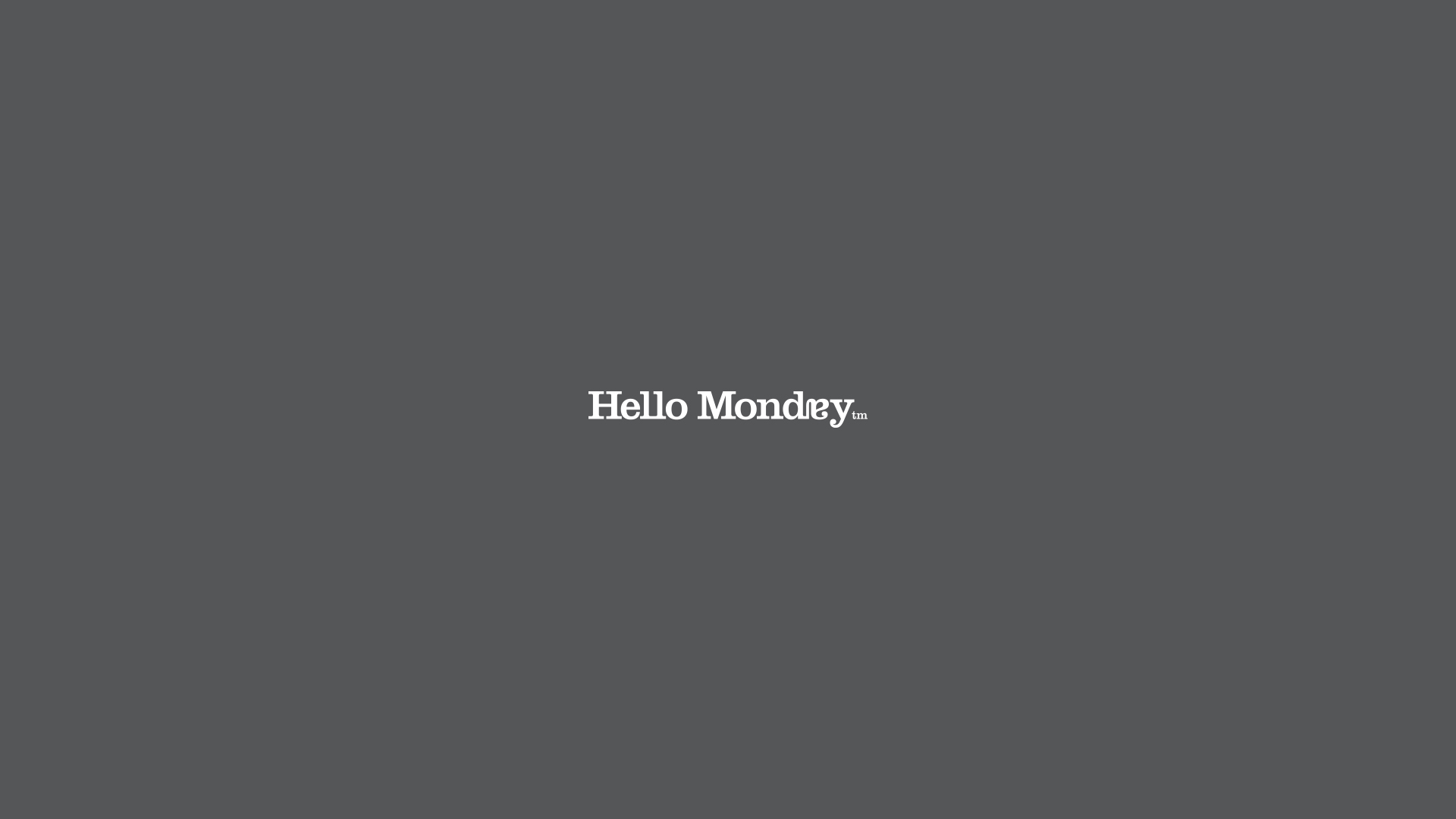
When I was in my freshmen year of uni, a senior showed me Hello Monday. Since then, they have always held a place in my heart. Their Danish origin rings through all that they do, including transforming Monday into the best day of the week. During one of my visits to New York City, I met up with Evan Anthony, an alum of New Media. We ended up talking about Hello Monday and he mentioned that they were one of his favorite studios to freelance for. It was through Evan's kindness that I had the opportunity to visit the humble NYC office of Hello Monday. I met with Megan Potter (as well as her dog I believe) and Kamron Robinson. We chatted for an hour about the company and by the end, all my thoughts about the studio were confirmed. If I had the opportunity I would love to freelance for a company that values their employees as much a Hello Monday.
CW&T —
Design family
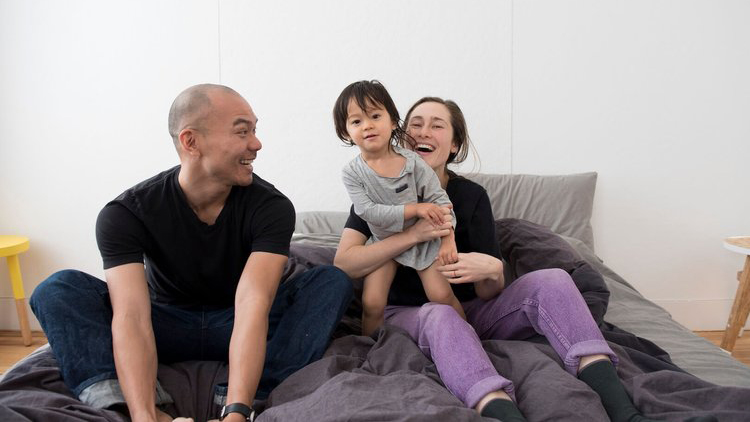
If my personality were a company... it would probably look something like CW&T, the design practice of Che-Wei Wang and Taylor Levy. This design duo (along with their two sons), is designing the things they want to see in the world. They are not bound to any material or software making it easy for them to go from precision pens to bladder art. Seeing this mentality towards design is energizing. I think most studios are interested in making money, getting clients, and winning awards. CW&T does not fall into the "most studios" category. In fact, I really haven't found another place like CW&T, that is as genuine, intentional and open about their purpose. When I looked at their guiding principles I couldn't help but smile because everything that I have come to believe about design, they believed too: stay small, share everything, buy lots of lottery tickets, make what you want, the proof is in the prototype, make it good, make it last, keep it real, and never exit. In general, I think it is hard to do what you believe day in and day out. Seeing two individuals driven by love, live successful lives makes me very happy.
Another thing that drew me to the small studio was a talk recently given by Che-Wei while at TNW 2018. He was talking about The new role of the designer in generative design and hearing his ideas made me think about Matt Jones' Centaur Theory, which I am a big proponent of. Che-Wei envisions a world where designers conduct their practice at the interplay of man and algorithm, coming up with the best solutions symbiotically rather than dictatorially. This vision is something the studio has already implemented and will continue to implement as neural networks, generative design, and natural language processing improve. Finally, on a side note, they have a baller system for project identification that puts my ID system to shame. Some might say it is overkill but I think it's just the right amount of meticulousness. My favorite project thus far is their single-use stopwatch.